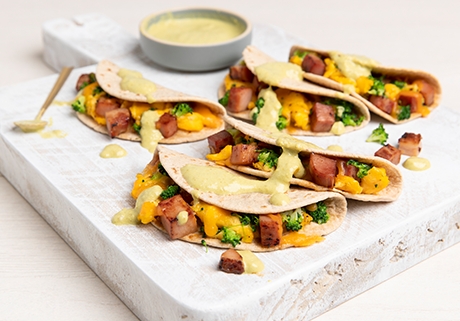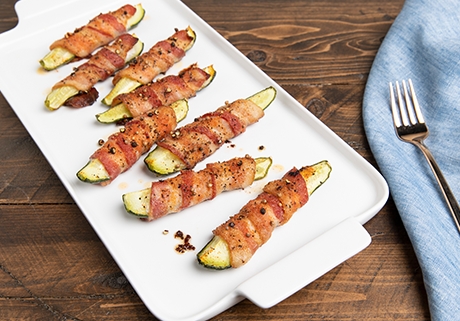Get fired up for new ways to prepare
classic menu staples.
Smithfield Mornings & More:
The Big 3
1. Bacon
2. Breakfast Sausage
3. Ham
Why These Products?
• Everyone loves the essentials
• Top 3 breakfast proteins
• High menu penetration
• Pandemic fallout emphasizes menu efficiency and need to expand uses of products–i.e., versatility of ingredients, simple products and unique recipe creations
Proteins for Mornings & More

Bacon is on 71% of menus and still growing +2.4% 4-year menu growth.
Datassential Smithfield Brand Tracker, 2021
BACON
Fully cooked meats allow chefs to create items they usually avoid due to lack of time or lack of extensive kitchen equipment.
"Bacon is the 9th wonder of the world. It goes with just about anything. Can’t be limited to just breakfast."
– Ryli Vissers, Chef de Cuisine, University of Notre Dame
Bacon-wrapped items have seen a 6.7% menu growth over 4 years. (Datassential)
Bacon has a 35% penetration on all-day menus. (Datassential)
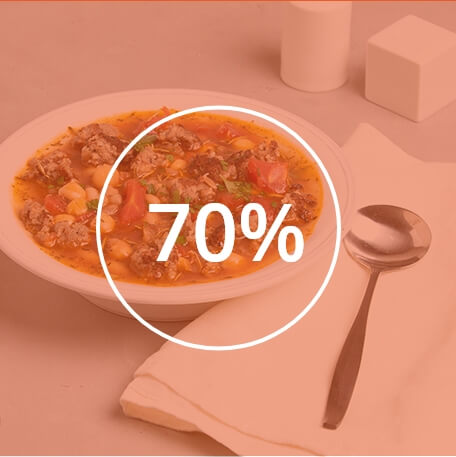
70% of consumers who ordered out within the past 7 days ordered dinner.
Technomic, Consumer Trends Report, 2020
BREAKFAST SAUSAGE
Simple product, bursting flavor.
Breakfast sausage is growing.
Breakfast sausage: +15% 4-year menu growth (Datassential)
Breakfast Sausage as a burrito protein has seen a 1.8% menu growth over 4 years. (Datassential)
Why not use breakfast sausage for more than just the morning?
"Breakfast sausage is such a great compliment to other flavors. Not only is it adding that spiciness and zestiness, it really cuts through a lot of those fatty items, like creams and cheeses."
- Frank Sanchez, Executive Chef, Dallas Cowboys World Headquarters
Stir fried pork dishes have seen 13% menu growth over 4 years. (Datassential)
Mornings & More Recipe Ideas:
Breakfast Sausage Burrito
Sausage Stir-Fry
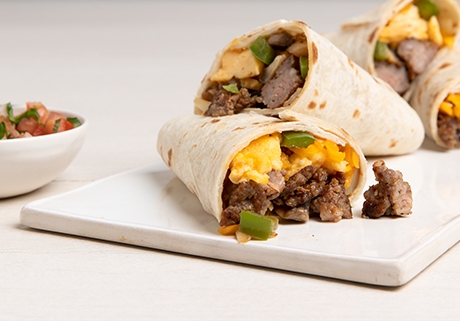 Download Our Recipe Application Guide for Inspiration!
Download Our Recipe Application Guide for Inspiration!
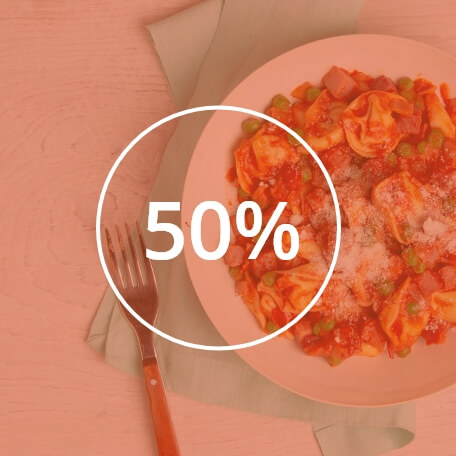
Ham is on 50% of menus in the US.
Datassential Smithfield Brand Tracker, 2020
HAM
The basic protein we all know and love: Ham.
But not just for sandwiches!
Breakfast quesadillas are exploding on U.S. menus – up 14.2% over 4 years. (Datassential)
"Ham is a really versatile product just like bacon because you’re not just getting a piece of meat. It’s flavorful and really has its own flavor profile that you can put into vegetables, stocks, etc."
- Ryli Vissers, Chef de Cuisine, University of Notre Dame
Mornings & More Recipe Ideas:
Scrambled Egg & Ham Tacos
Ricotta-Filled Tortellini with Ham
